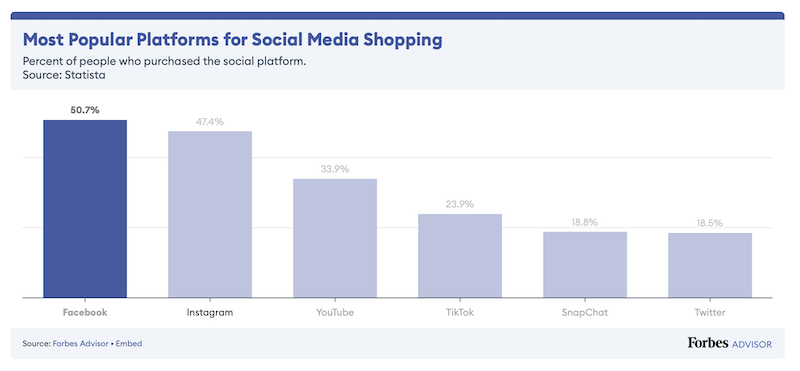If you’re seeking methods to increase your revenue and elevate your ecommerce company to greater levels, then the latest data from Forbes should be a priority in your considerations. They’ve gathered statistics from across ecommerce verticals from the UK and worldwide to demonstrate the strength of digital sales.
UK ecommerce statistics
The UK has one of the most advanced ecommerce markets in the world. Here’s a summary of some key statistics:
- In 2023, the UK had nearly 60 million ecommerce users (Digital Market Outlook, Statista)
- By 2025, the UK is predicted to have 62.1 million ecommerce users (Digital Market Outlook, Statista)
- In 2020, during Covid, ecommerce sales in the UK accounted for around a third (32.5%) of all retail sales (Statista)
- By 2022, the proportion of UK retail sales made online was 26.5% – but this was still more than double the level compared to 2012 (Statista)
- By 2025, the proportion of all UK retail sales made online is predicted to reach 38.1% – amounting to a value of £152 billion or $194.1 billion (Statista)
- Fashion is the biggest sector for UK ecommerce with 26% of all textile, clothing and footwear purchases made online in 2022 (UK Government)
- Consumer electronics was the next highest-grossing category for ecommerce revenue in the UK in 2022 (UK Government)
- Amazon was the UK’s leading consumer electronics online store in 2022 with sales reaching an estimated 5.2 billion US dollars for that segment (Statista)
Global ecommerce statistics
But selling via ecommerce goes well beyond UK shores. By pairing a strong online presence with the latest ecommerce platforms, you can open the doors of your business to the world and remain open 24/7. Here’s a round-up of the latest global statistics and why they matter. You must identify the apps you might wish to install on your platform, as most only serve the biggest volume of users.
20.1% of retail purchases are expected to take place online in 2024
Each year, fewer and fewer people are shopping in physical stores. To stay ahead of the game, your company needs to maximise its online presence and give customers a viable way to shop online. Rather than putting more money into brick-and-mortar locations, consider putting that budget into developing and marketing an online store.
By 2027, 23% of retail purchases are expected to take place online
Online shopping statistics show the increase in digital orders is not just a trend. Shopping online is here to stay, as 22.6% of retail sales will be online in 2027. Start thinking today about how to sell products online to avoid becoming obsolete.
Ecommerce sales are expected to grow 8.8% in 2024
The entire ecommerce business is booming, not just retail sales. With nearly 9% growth projected for this year, there are plenty of opportunities to dive in. Help your business stand out from the competition by staying at the forefront of online payment technologies and creating a website that’s easy to navigate and browse.
The global ecommerce market is expected to total $6.3 trillion in 2024
Selling products online means you’re not limited to local consumers. This gives you nearly unlimited potential for new demographics – and the statistics show companies are taking advantage. The global ecommerce market is expected to be worth $6.3 trillion this year – up from $5.8 trillion in 2023.
By 2027, the ecommerce market is expected to total over $7.9 trillion
This could be a good time to get into ecommerce, as the market shows no signs of slowing. By 2027, experts predict it will total over $7.9 trillion. The earlier you buy in, the more money your company stands to make over time.
Global ecommerce shopping behaviour
With the ease of international shipping and the simplicity of online orders, choosing a product from overseas is not a big concern for online shoppers. Globally, 52% of online consumers order from both local and international websites. Tailoring your offerings to international customers by offering additional shipping options could be a viable way to increase your sales. The most common reason online shoppers abandon their cart is because of additional costs like shipping, taxes and fees (47%).
If you plan to add ecommerce to your business, you should know what will deter, rather than attract, customers. Almost half of online shoppers reported that extra fees, such as shipping and taxes, will prevent them from moving forward with their purchase during the checkout process. Other inhibitors include requiring shoppers to create an account, slow delivery times, website privacy concerns and a long or complicated checkout process.
25% of online shoppers abandon their cart because the site wanted them to create an account
While you can ask online shoppers if they’d like to create an account on your website, you shouldn’t require them to do so. This is because some of them may simply leave your online store and look elsewhere for what they need. They’d prefer to checkout as guests and don’t want to go through the time and hassle of creating a username and password.

However, before you consider this a priority, remember the Pareto Principle (80/20 rule), that 80% of your sales will come from just 20% of your audience. Consequently, you can’t afford to not know who they are. Capturing an identified consumer is paramount. So while actually “having an account” isn’t essential to purchase online from you, you must capture their contact data – email address, with permission to use it as well (if only to confirm their order). This also complies with the appropriate legal Data Protection and GDPR / CCPA requirements.
24% drop out of an online shopping session because shipping is too slow
When a customer orders a product online, they may not expect it that hour or that day. But many of them want it as soon as possible. If it takes weeks or months for you to ship orders, they’ll likely leave their online shopping session on your website and turn to a competitor with faster shipping times. Ecommerce and slow shipping are not a good combination so it’s important to streamline your shipping processes and do whatever you can to expedite the time it takes for customers to receive their orders.
34% of shoppers shop online at least once a week
For many people, shopping online is a strong habit. As many as 34% of shoppers buy something online once a week. Your company may be able to capitalize on this by using email marketing to send out weekly product updates and offerings to entice your customer base into a purchase.
But don’t be so naive as to believe it is as simple as bludgeoning them with campaign styles of 10 years ago. The sophistication of this marketing channel has moved on beyond all recognition. If you haven’t heard the term hyper-personalisation, then you need to learn it quickly, as it is now responsible for delivering 20x more than every other form of ecommerce marketing combined. It is offering the right products to each individual when they are most relevant to them.
Retailers used to segment their audience into their highest potential for ROI based on offer, region, age, and then product preference. Now, following the advent of AI, ecommerce retailers can install a wholly autonomous solution, that doesn’t require staff employed, with their inherent overheads, before recouping a return.
We have published an article on the distinction between the leading 30 global vendors of hyper-personalisation software for consideration. Often hyper-personalisation as terminology is paused at offerings at your point of sale, i.e. your website. However, that defeats the purpose of hyper-personalisation, as it has to be delivered to them at the moment in time, that is most relevant to that person. so true hyper-personalisation reaches them via email, when the ideal moment is identified, requiring send-time optimisation.
The online shopping cart abandonment rate is 70%
Over 48 studies have looked at shopping cart abandonment rate statistics, and the average between them all is 69.99%. This number has held relatively steady since about 2014. If you want to reduce this percentage, consider changing some of the factors we identified above, such as enabling guest checkout, reducing shipping costs and providing faster turnaround times. You might also consider abandoned cart email campaigns to lure customers who are on the fence back in.
Global Social Media Ecommerce Statistics
$992 billion was spent globally via social media commerce in 2022
As the number of social media users increases, so does the amount they’re spending via apps. In 2022, customers spent $992 billion on purchases through social media. This trend is particularly big in Thailand, where 90% of internet users have purchased from social media. India is a close second, with 86% of internet users making a social media purchase.
Social media commerce is expected to reach $8.5 trillion by 2030
If you thought the current social media commerce market was big, consider that it’s expected to jump up to $8.5 trillion in just six short years. There are major opportunities here for businesses to cash in on their social media following. To take advantage of this growing audience, we recommend using a robust social media management tool.
China, India and Thailand have the highest rate of live social commerce shoppers
Live commerce is a growing trend where users buy products from social media sites in real-time. It’s a particularly popular option in Thailand, India and China, where over seven in 10 users engaged in live shopping. If you’d like to move into the global market or expand your global reach, selling your products or services on social media is certainly worth exploring.
Facebook is the most popular social media platform for social commerce transactions
There is no shortage of social media platforms these days but not all of them are effective for selling your offerings online. About 51% of survey respondents stated that they use Facebook for online purchases so keep this in mind when determining which platforms to use.

40% of purchases have a social media influence
Social media gives many people the feeling that they need to “keep up with the Joneses.” As a result, many of them make purchases they might not have considered if they didn’t use a platform such as Facebook or Instagram. The most influential products on social media include clothing or accessories, health or beauty items, food or drinks, event tickets and vacation experiences.
49% of social commerce shoppers have had an influencer’s recommendation impact their purchase
Social media influencers are active social media users who have built a reputation for their expertise and knowledge on a certain topic. Almost half of social media commerce shoppers have been encouraged to make a purchase based on what they saw or heard from these influencers. Believe it or not, 70% of teens trust influencers more than traditional celebrities and 86% of women use social media for purchasing advice.
Global ecommerce statistics for mobile
91% make online purchases using their smartphone
Most people depend on their smartphones daily. Whether they have an Apple, Android or other device, many of them turn to it every time they want to make an online purchase. While it’s vital to create a seamless shopping experience on a desktop, it’s almost more important to ensure your website looks and works well on mobile devices.
Mobile commerce sales are expected to account for 62% of all retail sales by 2027
Since 2018, the global mobile ecommerce market has been steadily increasing. It was a mere 56% back then, but experts estimate it’ll reach 62% in 2027. To prepare, it’s important to make sure your online website and store follow the best mobile website design practices, including making pages easy to navigate with thumbs and utilising responsive web design.
Mobile commerce accounted for $491 billion in sales in 2023
Mobile commerce is a big market, as it totalled $491 billion in sales last year. More and more customers are shopping from their phones, so it makes sense for your company to start considering tactics such as mobile SEO to help specifically draw in smartphone users to your website.
Mobile commerce sales are expected to account for $856 billion of commerce sales by 2027
In just three years, mobile commerce sales will nearly double to $856 billion. To stay competitive in your industry, your business must start building mobile ecommerce into your overall digital marketing strategy. Consider redesigning your website to be more responsive, creating a shopping app for users to browse your products or even offering special discounts or perks for mobile users.
Tablet m-commerce sales are expected to reach $54.01 billion by 2026
Smartphones are widely used for online shopping, but what about tablets? Tablet ecommerce sales reached $61.08 billion in 2022. Surprisingly, this figure is expected to go down to $54.01 billion by 2026. This is likely because tablets are becoming less popular and ecommerce retailers have improved the mobile shopping experience.
Global ecommerce fraud statistics
$41 billion was lost to ecommerce fraud in 2022
Fraud that occurs on an ecommerce platform, such as using a stolen or fake credit card to make a purchase, is considered ecommerce fraud. Unfortunately, ecommerce retailers missed out on about $41 billion due to ecommerce fraud in 2022.
$48 billion is expected to be lost to ecommerce fraud in 2023
Sadly, ecommerce fraud is not going away any time soon. In fact, online retailers will likely lose $48 billion to ecommerce fraud in 2023. If you’re using ecommerce to boost your sales, prioritize fraud prevention measures, such as routine security audits, an Address Verification Service (AVS) and a Hypertext Transfer Protocol Secure (HTTPS).
The ecommerce fraud detection and prevention market was over $36.7 billion US dollars in 2021
If you’re selling products online, you’ll need to account for some ecommerce fraud detection and prevention tools in your budget. This might include verification software or IP fraud-scoring tools to stop thieves from trying to scam your system. Right now, the market for this software is booming, as it’s worth over $36.7 billion.
By 2027, the ecommerce fraud detection and prevention market is estimated to reach over $100 billion
Ecommerce fraud detection and prevention tools will only become more important as online shopping continues to grow. Experts estimate the market will be worth over $100 billion by 2027. Scammers will continue finding ways to skirt fraud detection efforts, meaning companies will need to invest in more vigilant software as well as stay payment card industry compliant.
The average monetary loss in an ecommerce scam is £79
This number is up from £75 the year before, and it’s expected to keep on increasing. Unsurprisingly, the number of consumers who lost money after being targeted by an online shopping scam is also on the rise. It’s gone from 71% in 2015 to 75% in 2021. Businesses need to take proactive steps to protect both their own and their customers’ finances.





